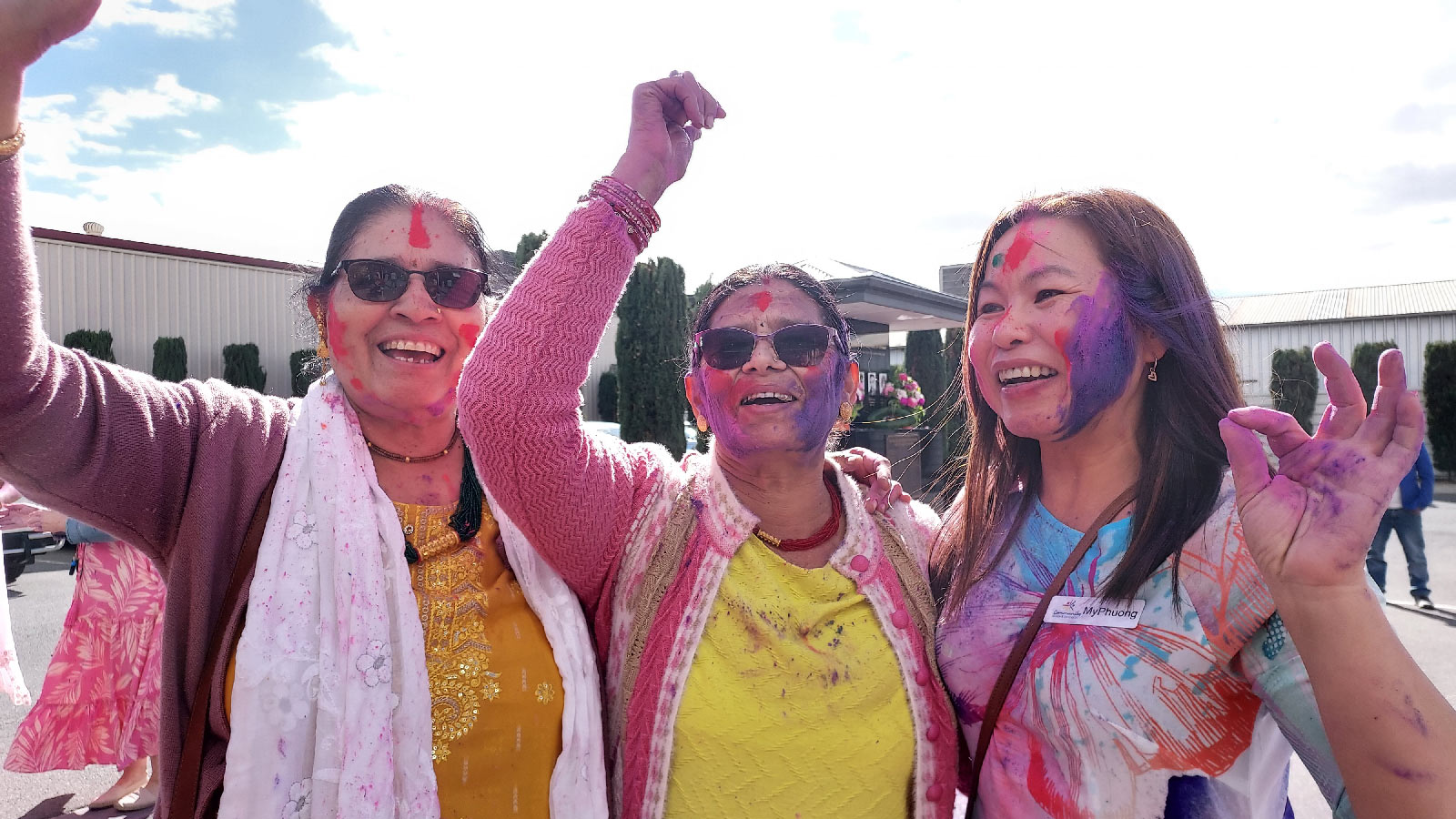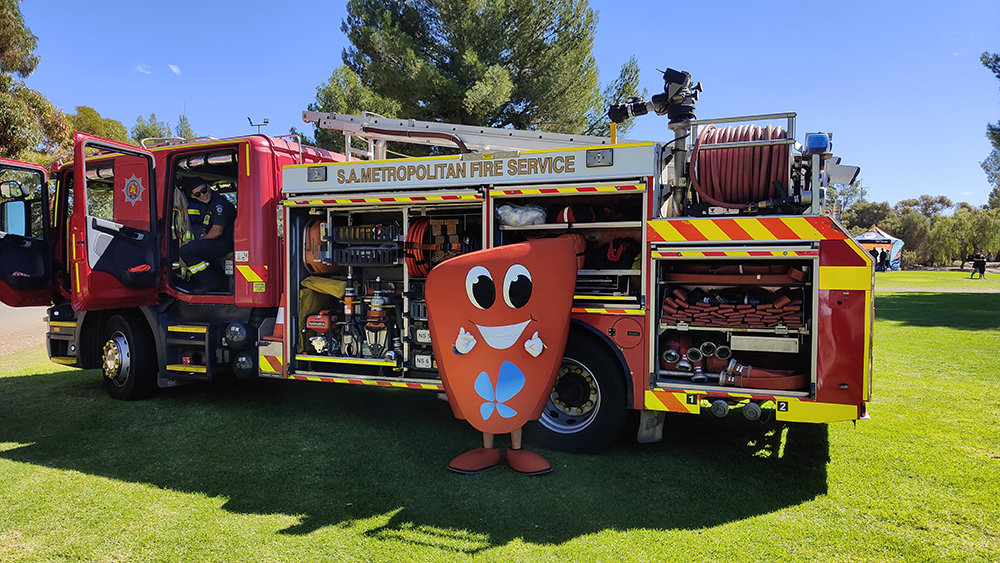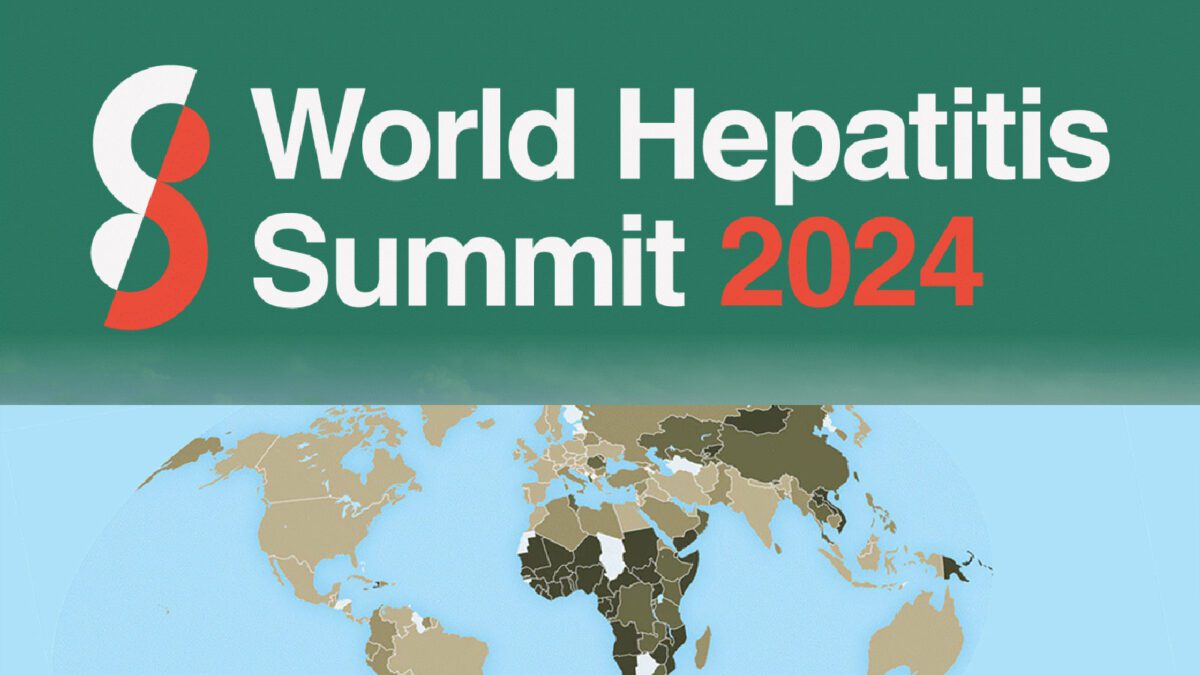At first glance, Harmony Day at Community Access and Services SA (CAaSSA) in Ascot Park is like most other multi-cultural festivals: people from minority cultures milling around in exotic costumes, there’s a bit of cultural performance, and food that’s not chips and burgers. But as you immerse yourself in the day, it starts to feel different.
What sets CAaSSA’s Harmony Day apart is the feeling that everybody there is the same – everyone owns up to a cultural identity and rocks up in their cultural outfit if they wish to, and the majority do. For many, those outfits are their daily wear. Although the host organisation grew from one particular migrant community, the other communities’ ownership of the event was palpable.
Everybody brought something of their culture to share, and despite the host organisation’s Vietnamese community origins, the culture that stood out that day was not Vietnamese: the food wasn’t Vietnamese, and neither was the crazy, happy sharing of colours at the end of day. (That was South Asian.)


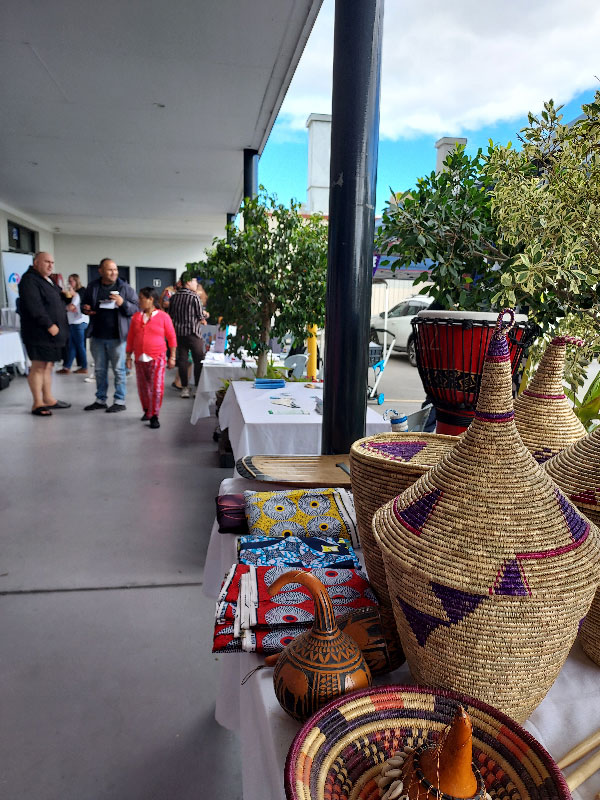
Harmony Day at CAaSSA works because it wasn’t a mainstream organisation “celebrating” the cultural diversity of their clients, partner organisations or some of their staff– the sort of affair where the latter have to present their multi-cultures while the host is exempt. CAaSSA’s Harmony Day was people from different cultures (mainly minority) coming together to enjoy each other’s fun and beautiful things, where no party can claim, by omission, to not have a cultural heritage to present. In short, it works because everyone is equal.
The difference is subtle, but critical in the observance of a day which has its origins in the gunning down of 69 peaceful demonstrators in South Africa, protesting against apartheid. The Sharpeville Massacre on 21 March 1960, provided the impetus for the United Nations to set that date as a reminder to the world of the need to eliminate racial discrimination.
… kids in school were asked to turn up in “national costumes” and parents to send along “multicultural foods”…
In 1999, the Howard Government in Australia declared 21 March “Harmony Day”, radically shifting the focus of the International Day for the Elimination of Racial Discrimination, from anti-racism to multi-cultural celebrations, and in so doing, also shifted the conversation off First Nations issues.
To celebrate Harmony Day, kids in school were asked to turn up in “national costumes” and parents to send along “multicultural foods”. Those requests were invariably directed at non-white families and as far as I can recall, none of the children of European heritage turned up with their culture’s special edibles or in “national costumes” – not even kilts, dirndls or lederhosens.
It was unclear how exoticising non-European cultural heritage was a celebration of harmony, and exactly what harmony was being celebrated, especially as, based on experience and countless anecdotes, kids of minority cultures were often picked upon and bullied at the very schools “celebrating” their heritage. The theory is that by helping children appreciate Australia’s cultural diversity, those children from non-mainstream cultures would be accepted. It is debatable whether getting kids to turn up in traditional gear would make them more accepted in the playground, or set them further apart.

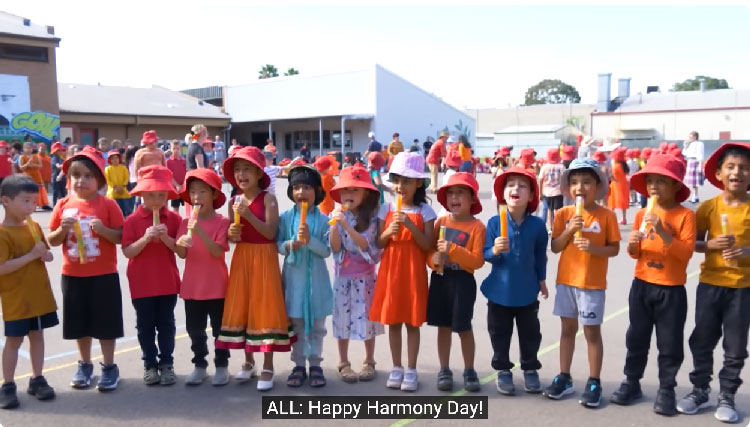
Similarly, workplaces and service organisations usually marked Harmony Day with “cultural” food, outfits and performances by people from minority cultures while those from the mainstream culture sit back and forget they too have cultural origins.
The introduction of a harmony day colour (orange) did reduce the pressure on participants to turn up in traditional outfits if they didn’t feel like doing so, or didn’t have any at hand. Just wear something orange.
There also seems to be growing awareness of the discrepancy and kids of European heritage have turned up to Harmony Day parades in Captain Cook-style outfits and dirndl-style dresses. That some have dressed as contemporary Australian icons like Steve Irwin or a soldier in camouflage gear, claiming those as their cultural heritage, raises a host of questions on cultural heritage and ownership, Australian identity, and how Harmony Day addresses them.
Against this awkward backdrop, it was with much surprise that Hepatitis SA workers found themselves enjoying CAaSSA’s Harmony Day celebrations last year, and looking forward to staffing an information table at the same event this year.



This year’s theme was “Everybody Belongs“. Like last year, there were the cultural display tables, including Aboriginal craft, but this year, some lucky service organisations, like Hepatitis SA, were invited to have tables as well. We were happily sandwiched between SA Police and our friends from PEACE Relationships Australia.
A disaster was averted when a very helpful CAaSSA worker, Dung, helped to repair our banner which had gone berserk and torn itself. With that drama behind us, we had an enjoyable, fruitful time talking to the streams of adults and kids (on school holidays) who came by, and although we brought publications in seven languages we still missed some – an indication of the many cultural communities who turned up.
In his Welcome to Country, Ngarrindjeri-Kaurna cultural awareness advocate, Petiola Wilson, said, “You come here from another country for a fresh start, but you still bring your culture with you. Aboriginal culture has been taken away from us that’s why we are where we are in our country. Engagement is how we share our story and through things like this, that’s how we reconnect… it’s important for us to give that sense of belonging to our next generation and that’s what we’re doing here… We say welcome, and thank you for bringing us together.”
Harmony Day 2024 with CAaSSA was fun-filled, happy and uplifting. Here’s to more CAaSSA-style Harmony Day events.

Last updated 13 July 2024
More from:
Enjoyed this article? Subscribe to be notified whenever we publish new stories.
Subscribe for Updates
